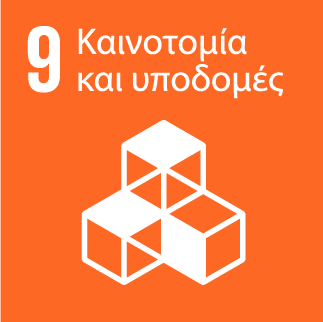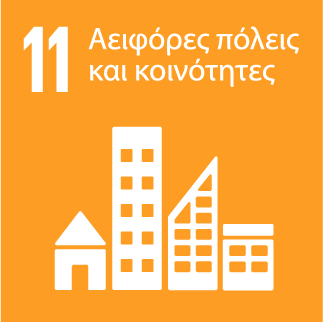Robots improving B2B medical material supply chain
Description
On the one hand, automation systems, vehicles, and robots improve efficiency of transporting materials and finished goods in pharmaceutical warehousing and supply. In the pharma warehouse “facility of the future” -and in some facilities already today- automated systems will transport medical items from the warehouse to the pharmacy. Autonomous delivery robots (ADRs) have an intelligent navigation system with built-in sensors, cameras, and software that allows them to identify their surroundings and take the most efficient route to their destinations, safely avoiding obstacles, people and other electric or human-powered vehicles. ADRs are electric powered ground vehicles that can deliver items or packages to customers without the intervention of a delivery person. ADRs are divided into two types. Sidewalk autonomous delivery robots (SADRs) are pedestrian sized robots that only utilize sidewalks or pedestrian paths. On-road or simply road autonomous delivery robots (RADRs) are vehicles that travel on roadways shared with conventional vehicles. Specifically, these collaborative robots can improve productivity and efficiency, and return on investment is typically less than a year. Particularly, ADRs are also more economical when delivery routes are relatively short. It is also suggested that ADRs can be feasible if companies scale up or cooperate to increase robot utilization.
On the other hand, with two thirds of the population predicted to be living in our cities by 2050, methods of transportation in urban spaces need to be reconsidered if low carbon emission goals are to be reached. The way we move around our cities is changing rapidly. But the way we design our streets has not changed at the same pace. Micromobility is a category of lightweight and small-sized transport mostly designed for the individual, although it includes modes that can carry up to three people. The rise of micromobility as a global trend has been somewhat unexpected and, even if tackled from a legislative and regulatory perspective, the street requirements for these modes are still not fully developed or addressed. All the cities in the world are working towards more sustainable and equitable transportation networks. Under this perspective, some visions promoting the modal shift from motorized to non-motorized vehicles, including delivery services, have already appeared and are to be adopted in the near future. The central idea of these visions is to both highlighting the convenience and flexibility of the micro-modes and pushing towards a micromobility-based urban environment. Particularly, nowadays for last mile servicing and parcel delivery, micromobility based even in ADRs is an encouraging and valid mode of transport alleviating the pressure on the current road infrastructure that gains increased popularity and acceptability.
The business idea is concerned with an integrated system consisting of a fleet of SADRs that can carry medical material over short distances, mainly in micromobility streets. The on-demand delivery platform will enable a new era of instant delivery that will support and enhance B2B between medicine warehouses and pharmacies. Medical material will be directly delivered from one or more medicine warehouses to a requested pharmacy via a web/mobile app. It will constitute an end-to-end solution integrating the SADR, the robot stands and the cloud platform. We will provide our platform as a service (PaaS) initially to connect medical warehouses with pharmacies by means of SADRs in micromobility city streets, here or abroad, wherever they exist or are going to emerge. In a later stage and after the establishment of this solution it could be expanded to connect other pharmaceutical and healthcare organizations under the above settings. However, since it will be based on an agile approach, it could be also scaled up to similar applications and domains utilizing RADRs to connect pharmaceutical manufacturers with medicine warehouses or other healthcare, e-commerce and logistics organizations to mention some.
Some key technologies of the system comprise AI and smart robotic control, traffic control framework, failsafe telecommunication circuits, secure data transfer over VPN, remote fleet control (mainly in emergency situations), auto-rechargeable stands, cloud-powered integrations, web/mobile app.
The most astonishing features of proposed SADRs are as follows:
(i) They will be derived from withdrawn plastic wheeled blue bins of medium size used to collect garbage for recycling in city districts, to which all the necessary modules, i.e., robotic platforms, IoT sensors, LIDAR, cameras, telecommunication circuits, displays, security mechanisms, 4W drive, etc., will be adapted.
(ii) The robots will move at pedestrian speed (or a little quicker), mainly in sidewalks and pedestrian paths, and they’ll be inherently safe and navigate around people, objects and other micromobility vehicles (e.g., bikes, scooters, skateboards, hoverboards, etc.).
(iii) For security, the bin lid will be mechanically locked throughout the journey and can be opened only by the recipients with their smartphone app or biometric authentication.
(iv) As an EV robot, the service will be incredibly clean and green. Moreover, it will support dynamic charging in case the pedestrian streets are electrified, semi-dynamic charging for slow-moving robots in crossroads or crosswalks and stationary charging at robot stands.
(v) Finally, the robots will be equipped with two wide side screens playing commercial advertisements from pharmacies, which will change depending on the pharmacy requested for the delivery or other agreements, to increase profits.
The business idea incorporates some disruptive technologies, several of them mature enough to ensure technological feasibility of the whole endeavor. It addresses a real need in modern medicines delivery system in order to be enhanced in terms of quality, visibility, speed and cost to perform effectively. To understand the impact of the successful roll-out of this solution in society, just look at some figures taken from the US health care ecosystem:
- 180M patients regularly take a prescription medicine,
- 22.000+ independent pharmacies are supported by distributors’ core and value-added services, and
- Distributors handle 92% of pharmaceutical sales.
We are going to effectively and viably connect local businesses (distributors’ warehouses and pharmacies) to help them cut costs, streamline operations and grow business. Our SADRs (or even RADRs in the future) will be fully electric and contribute no carbon emissions for the protection of the environment. Furthermore, with no courier handling, SADRs keep medical material safe and protected against contamination. Additionally, in an international level, 20-50% cost savings have been recorded when switching from traditional courier services. The fact that medical material can be directly delivered from one or more medicine warehouses/distributors to a requested pharmacy warrants the economic viability of the proposed solution. Besides, the brilliant idea to incorporate wide side screens to SADRs playing commercial ads from pharmacies during journeys to service the requested pharmacy or other agreements will surely increase profits. Last, but not least, our solution will have a considerable positive effect in circular footprint, since the SADRs will be suitably assembled from withdrawn plastic wheeled blue bins of medium size used to collect garbage for recycling in city districts, thus further contributing to the mitigation of the consequences of climate change.
Sustainable Development Goals

9. Industry , innovation and infrastructure
It addresses a real need in modern medicines delivery system in order to be enhanced in terms of quality, visibility, speed and cost to perform effectively. The on-demand delivery platform will enable a new era of instant delivery that will support and enhance B2B between medicine warehouses and pharmacies. Medical material will be directly delivered from one or more medicine warehouses to a requested pharmacy via a web/mobile app.

11. Sustainable cities and communities
Our SADRs (or even RADRs in the future) will be fully electric and contribute no carbon emissions for the protection of the environment. Furthermore, with no courier handling, SADRs keep medical material safe and protected against contamination. Our solution will have a considerable positive effect in circular footprint, since the SADRs will be suitably assembled from withdrawn plastic wheeled blue bins of medium size used to collect garbage for recycling in city districts, thus further contributing to the mitigation of the consequences of climate change. Nowadays for last mile servicing and parcel delivery, micromobility based even in SADRs is an encouraging and valid mode of transport alleviating the pressure on the current road infrastructure that gains increased popularity and acceptability.
Notice: Undefined variable: post_id in /var/www/vhosts/hei-prometheus.eu/httpdocs/entrepreneurship-acceleration-platform/wp-content/themes/understrap-child-1/loop-templates/content-businessidea.php on line 293